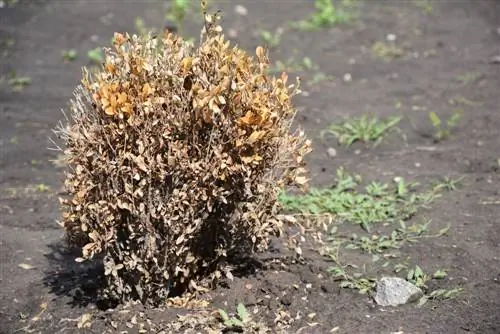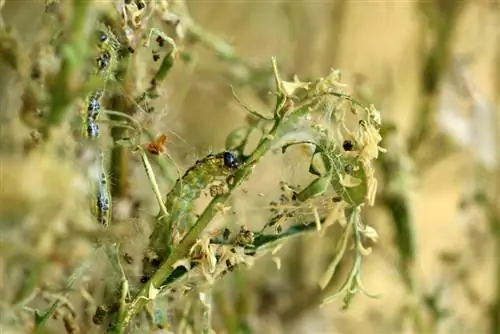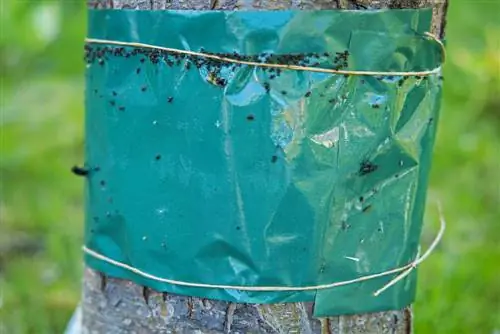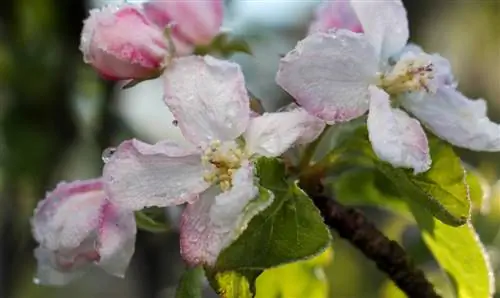- Author admin [email protected].
- Public 2023-12-16 16:46.
- Last modified 2025-01-23 11:21.
The common boxwood (Buxus sempervirens) is not only very popular with gardeners, many pests also find the evergreen tree extremely attractive. The so-called boxwood flea (Psylla buxi) causes serious damage to the leaves and thus to the jewelry value, but it can be combated relatively easily.
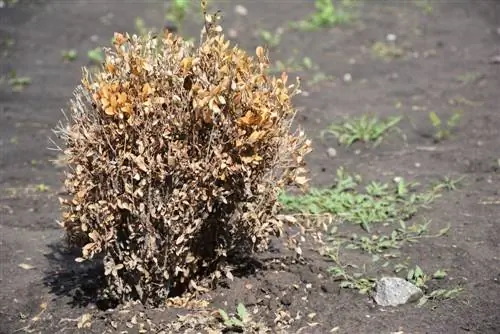
How are boxwood fleas controlled?
To combat boxwood fleas, cut back the boxwood in spring and dispose of the infected cuttings with household waste, and also clean and disinfect the garden tools. Insecticides against sucking insects can be used in heavy infestations.
malicious image
The boxwood flea larvae appear shortly after budding in spring. They prefer to sit on the soft shoot tips and feed on the plant's nutritious leaf sap. As a result, the leaves become crippled, they bend upwards like a spoon, and there are whitish structures on the leaves that look like cotton dots. As the disease progresses, the leaves become sticky and can become covered with a blackish film, a sooty mold fungus. The green larvae, which are about three to six millimeters long and difficult to see with the naked eye, excrete sweet honeydew like plant lice, which also attracts ants. The growth of infected plants is inhibited.
Lifecycle
The larvae develop into adult, very agile and jumping fleas within about six weeks, the first adult generation of which appears around the end of May / beginning of June. These in turn lay new eggs on the leaves in late summer, from which larvae hatch again the following year. Only one generation develops per year.
Fighting boxwood flea
If you know the life cycle of the boxwood flea, you can tackle the pest with secateurs. The quickest way to get rid of the animals is to cut back the boxwood in good time in spring and dispose of the clippings contaminated with the eggs and hatched larvae with your household waste. Do not compost the material as the fleas can still hatch and infect neighboring plants. In addition, the garden tools used must be carefully disinfected before and after pruning. If the infestation pressure is very severe, insecticides against sucking insects can help. You can get these from specialist retailers, but you should only use them if the pruning was unsuccessful.
Tip
Boxwood is very popular with all kinds of leaf sap-sucking insects as well as various types of mites. Make sure there is sufficient planting distance, a suitable location and a good supply of water and nutrients to keep the plant he althy and strong. Pests prefer to attack already weakened specimens.

